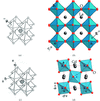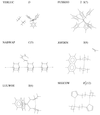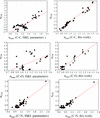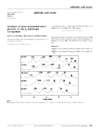issue contents
February 2007 issue

Cover illustration: The cover illustration represents the high- and incommensurately modulated room-temperature phases of Na2CO3 and its reconstructed reciprocal (h2lm) layer (![[gamma]](/logos/entities/gamma_rmgif.gif) -Na2CO3; Dusek et al. (2003). Acta Cryst. B59, 337-352]. Main reflections (open circles) and satellites aligned along parallel lines are indicated. A comparison of the two structures represented by slices parallel to the vertical axis c illustrates their relationship [Arakcheeva & Chapuis (2005). Acta Cryst. B61, 601-607].
-Na2CO3; Dusek et al. (2003). Acta Cryst. B59, 337-352]. Main reflections (open circles) and satellites aligned along parallel lines are indicated. A comparison of the two structures represented by slices parallel to the vertical axis c illustrates their relationship [Arakcheeva & Chapuis (2005). Acta Cryst. B61, 601-607]. ![[beta]](/logos/entities/beta_rmgif.gif) -Na2CO3 at 746 K (C2/m; pseudohexagonal) is shown on the left. All C and Na atoms closer than 3.12 Å are linked. The corresponding non-periodic slice of
-Na2CO3 at 746 K (C2/m; pseudohexagonal) is shown on the left. All C and Na atoms closer than 3.12 Å are linked. The corresponding non-periodic slice of ![[gamma]](/logos/entities/gamma_rmgif.gif) -Na2CO3 indicates how the modulation creates additional close contacts (Ivan Orlov's design is kindly acknowledged).
-Na2CO3 indicates how the modulation creates additional close contacts (Ivan Orlov's design is kindly acknowledged).
obituaries

research papers


















 access
access



 access
access







short communications




addenda and errata

international union of crystallography



 journal menu
journal menu











































